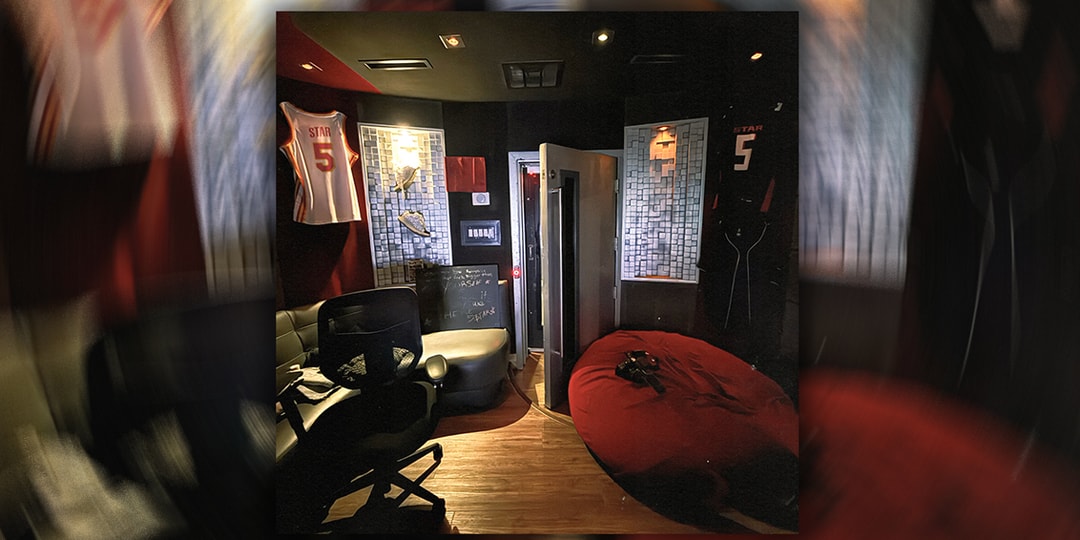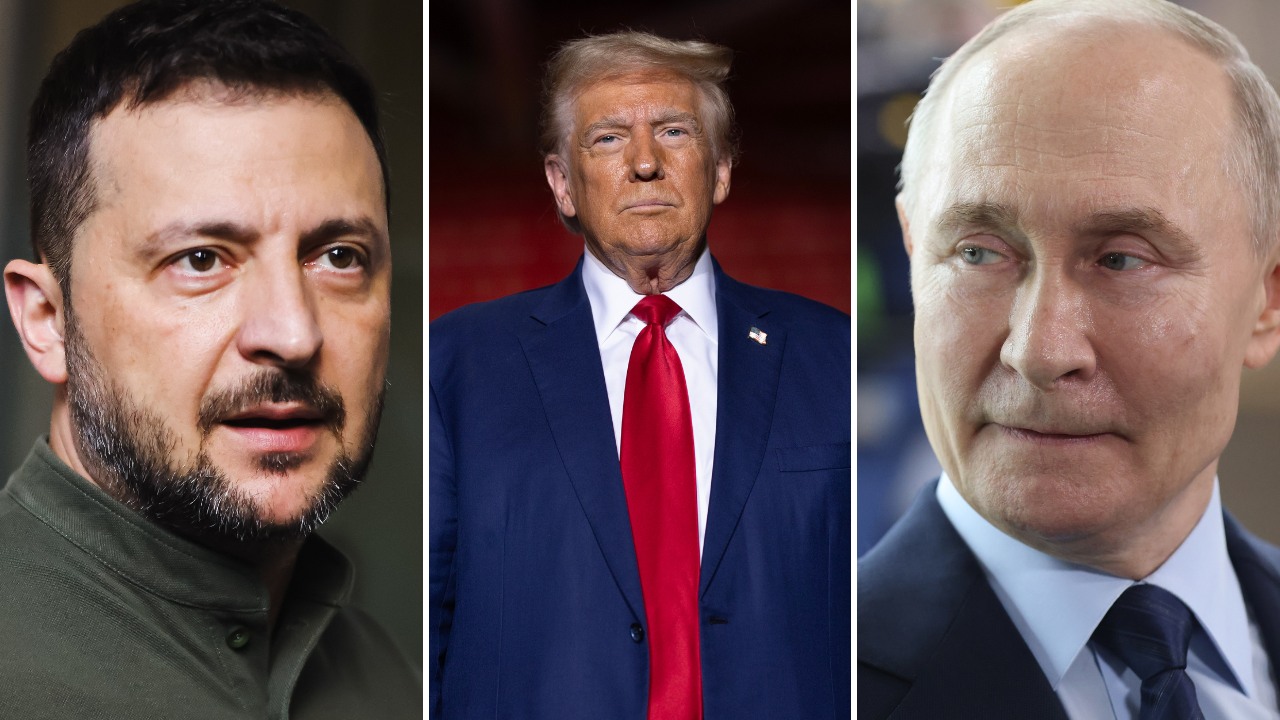Sports
Alex Ovechkin scores career goal No 892 as he nears Wayne Gretzky's all-time mark
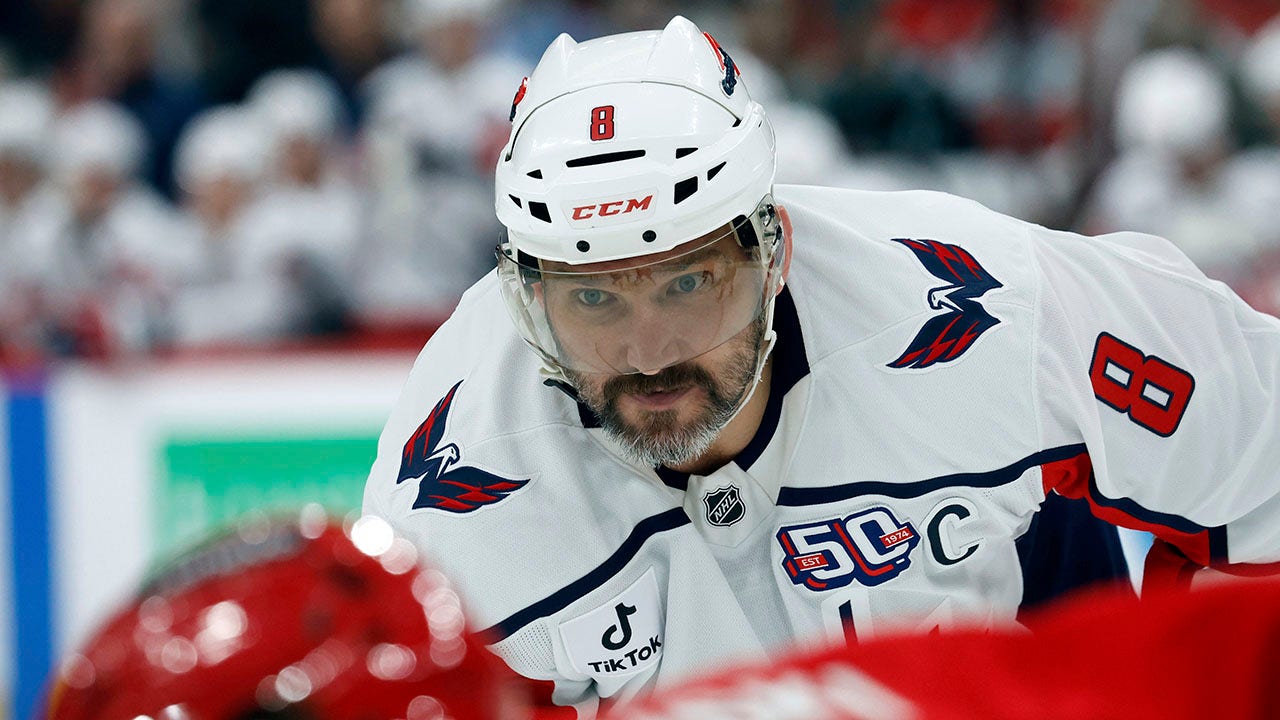
Washington Capitals star Alex Ovechkin moved to within three goals of breaking Wayne Gretzky’s all-time scoring mark as he netted his 892nd goal against the Carolina Hurricanes on Wednesday night.
It was the Capitals’ lone goal in their 5-1 loss to the Hurricanes. He nearly scored two in the game but was stopped at point-blank range by goalie Frederik Andersen in the second period. He ended up beating Andersen on a 5-on-3 power play later in the second.
Washington Capitals’ Alex Ovechkin, #8, celebrates a goal against the Carolina Hurricanes during the second period of an NHL hockey game in Raleigh, North Carolina, on Wednesday, April 2, 2025. (AP Photo/Karl DeBlaker)
“We have a pretty good chance in the second, first shift a breakaway,” Ovechkin said. “And in this game, if you have a chance, you have to use it and I think all goalies play well tonight.”
Ovechkin acknowledged the playoff atmosphere in Raleigh, North Carolina. In the third period, eight players were given game misconducts after multiple fights broke out.
“We understand there’s a possibility to see them in the playoffs,” Ovechkin said. “It was a playoff atmosphere out there.”
FLYERS FIRE HEAD COACH JOHN TORTORELLA JUST BEFORE SEASON’S END AFTER QUESTIONABLE COMMENTS
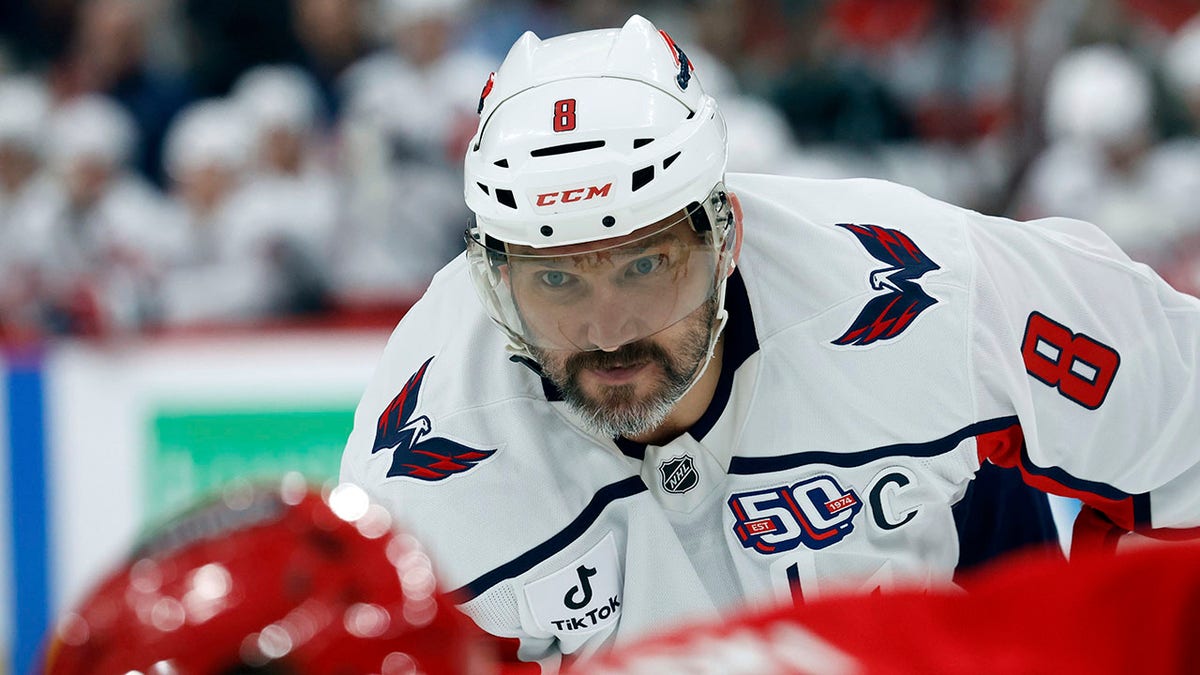
Washington Capitals’ Alex Ovechkin, #8, watches the puck during the first period of an NHL hockey game against the Carolina Hurricanes in Raleigh, North Carolina, on Wednesday, April 2, 2025. (AP Photo/Karl DeBlaker)
Washington and Carolina are the two top teams in the Metropolitan Division in the Eastern Conference. The Capitals have 105 points and the Hurricanes have 96.
“The GR8 Chase” is still on, at least for seven more games. Ovechkin could close out the record by the end of the weekend with a game against the Chicago Blackhawks on Friday night and then a road game against the New York Islanders on Sunday.
Gretzky’s record of 894 career goals was once thought to be unbeatable but Ovechkin is set to defy the odds.
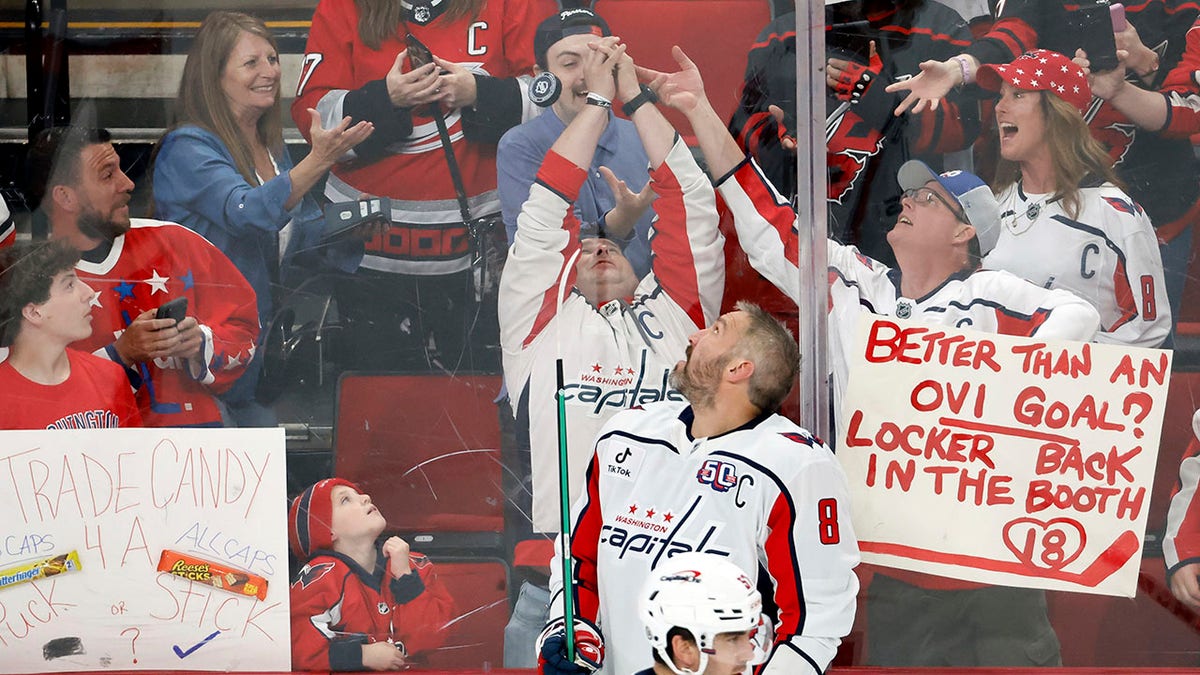
Washington Capitals’ Alex Ovechkin, #8, flips a puck to a fan during warmups prior to the Capitals game against the Carolina Hurricanes at an NHL hockey game in Raleigh, North Carolina, on Wednesday, April 2, 2025. (AP Photo/Karl DeBlaker)
“(The record) feels like it’s right there,” Capitals defenseman Trevor van Riemsdyk said. “He feels like he’s still scoring every night. It’s been huge for us and awesome for him to see that he’s still doing it at this torrid pace.”
The Associated Press contributed to this report.
Follow Fox News Digital’s sports coverage on X, and subscribe to the Fox News Sports Huddle newsletter.

Sports
Caitlin Clark's coach calls out WNBA for 'egregious' officiating: 'The disrespect has been unbelievable'
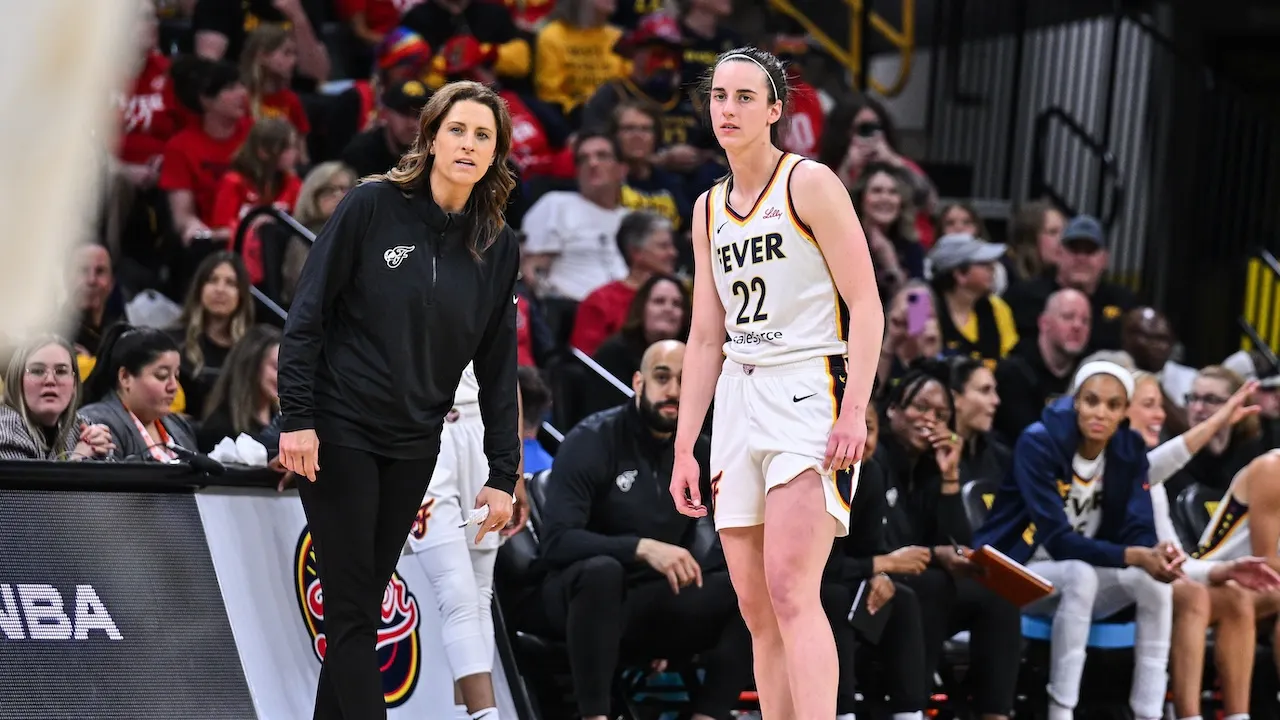
NEWYou can now listen to Fox News articles!
After a controversial no-call during a play involving Caitlin Clark Saturday, Indiana Fever head coach Stephanie White lambasted WNBA referees for their officiating in Fever games this season.
In a rant after the Fever’s 90-88 loss to the New York Liberty, White called the officiating “egregious.”
New York’s Natasha Cloud made contact with Clark during the game’s final possession, but referees did not blow the whistle.
“I thought she got fouled. I think it’s pretty egregious what’s been happening to us the last few games,” White said of Clark. “The disrespect right now for our team has been pretty unbelievable. So, it’s disappointing, you know, that it doens’t go both ways, or it hasn’t gone both ways.”
Head coach Stephanie White, right, and Caitlin Clark (Kevin C. Cox/Getty Images)
White also acknowledged the league has a system in place for teams to communicate disagreements with referee decisions but questioned whether the system works.
“There’s a system to making sure that we can send stuff in and communicate our grievances, so to speak. I don’t know if I have a feeling that the system works,” she said.
INSIDE CAITLIN CLARK AND ANGEL REESE’S IMPACT ON MEN’S BASKETBALL
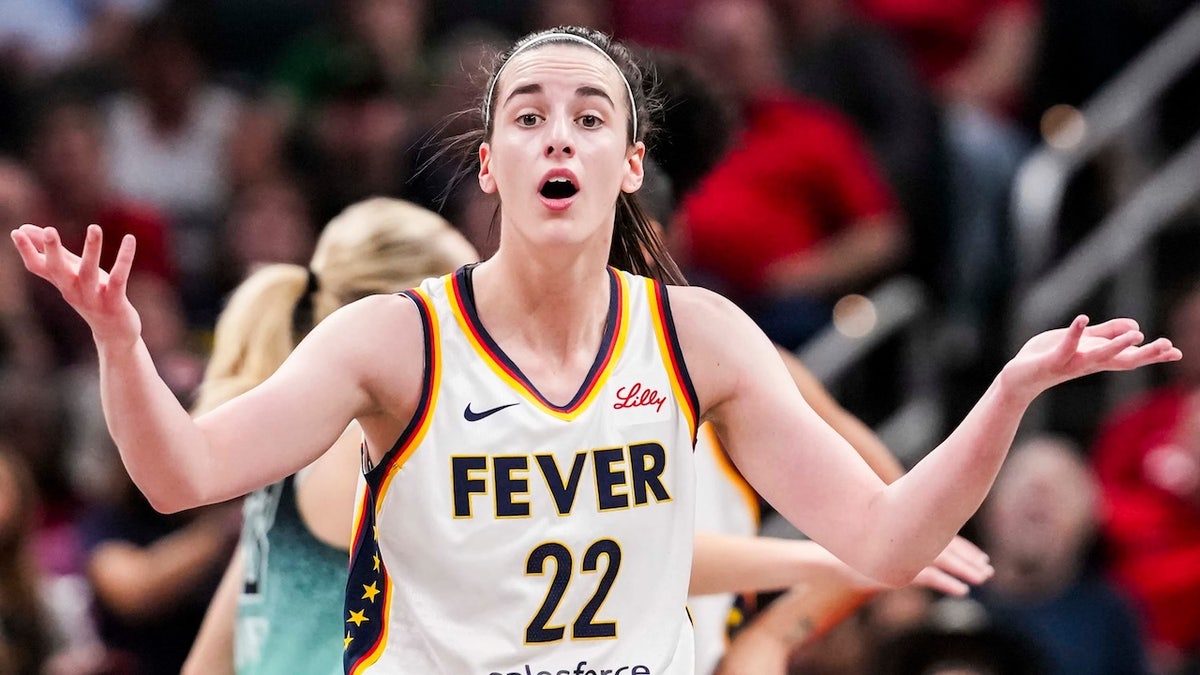
Indiana Fever guard Caitlin Clark reacts to officiating Saturday, May 24, 2025, during a game against the New York Liberty at Gainbridge Fieldhouse in Indianapolis. The Liberty won, 90-88. (Grace Smith/IndyStar/USA Today Network via Imagn Images)
Clark declined to give her opinion on the referee’s call on the final play.
“I don’t know. I have to go back and watch,” Clark said of the call.
During the game, Clark immediately looked to the officials for a foul and quickly began to shout at them when she realized no foul call was forthcoming. Her teammate, Sophie Cunningham, also approached the refs to protest the lack of a whistle.
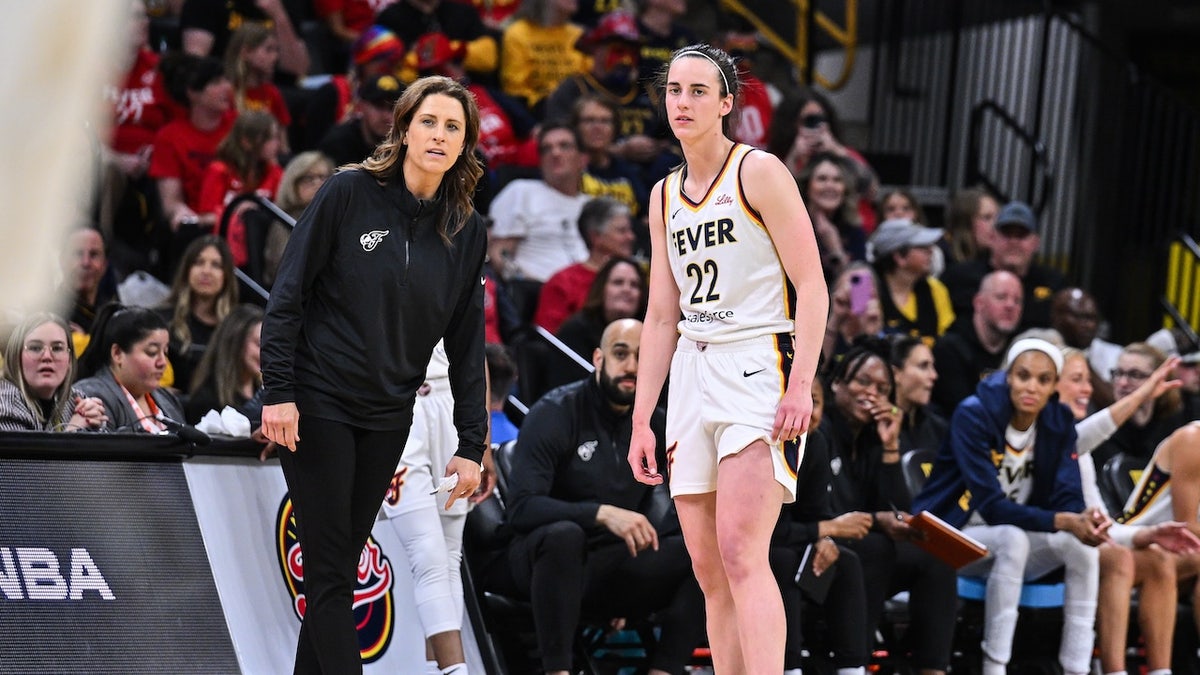
Indiana Fever guard Caitlin Clark (22) with head coach Stephanie White during the third quarter against the Brazil National Team at Carver-Haweye Arena. (Jeffrey Becker/Imagn Images)
A replay showed Cloud pushing her shoulder into Clark’s the moment the ball came loose. But the referees did not blow the whistle, and the game ended there.
The Fever fell to 2-2 on the season and have been on the wrong end of a number of controversial decisions by officials in their first four games of the season.
Follow Fox News Digital’s sports coverage on X, and subscribe to the Fox News Sports Huddle newsletter.
Sports
An inside look at the control center behind Honda's IndyCar racing effort
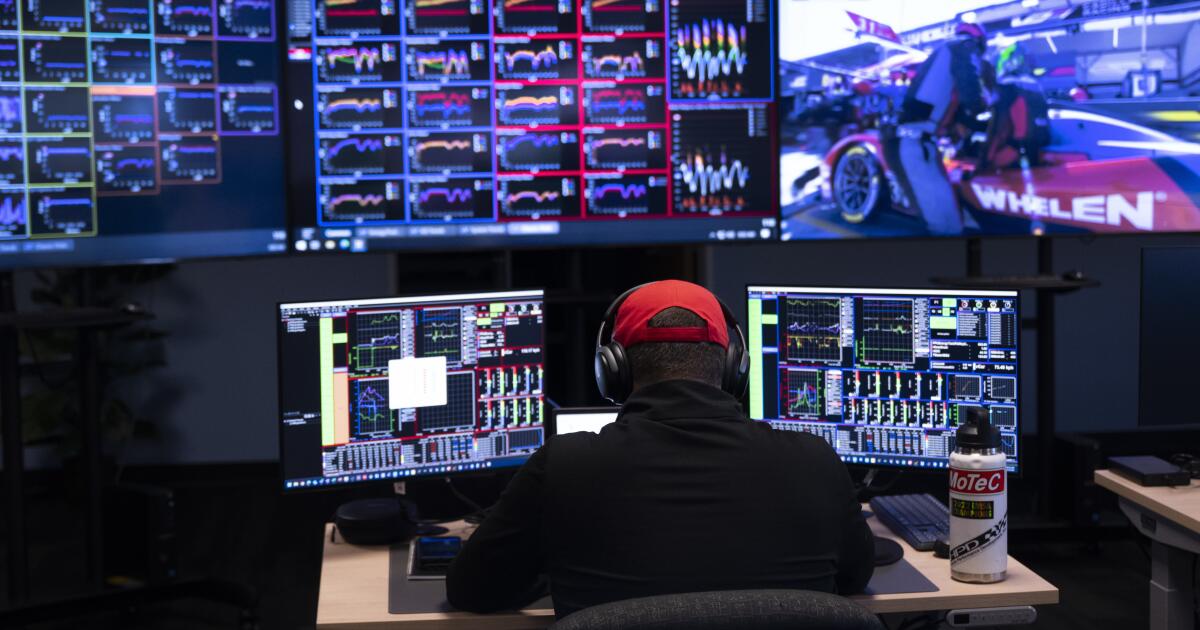
At the top of a hill in a sprawling Santa Clarita industrial park in the shadow of Magic Mountain’s roller coasters, a significant chapter in the history of motorsports was written.
But the story isn’t finished yet.
From the outside, the building is nothing special. Behind its walls, however, Honda Racing Corporation has designed, tested and built the engines that have won 14 of the last 21 IndyCar championships and all five IndyCar races this season. In Sunday’s Indianapolis 500, a race Honda has won 15 times since 2004, four of the top six starters will have Honda engines, including two-time winner Takuma Sato, who qualified second.
It’s a level of dominance unmatched in IndyCar history — in a series Honda probably helped save.
A technician works on an engine at Honda Racing Corporation. All of Honda’s engines for North American racing series are built in Santa Clarita.
(Robert Hanashiro / For the Times)
Amid the open-wheel civil war between Championship Auto Racing Teams and the Indy Racing League, Honda was prepared to walk away. Robert Clarke, who started Honda Performance Development (before it was renamed HRC in 2024) and made it a cutting-edge research and development facility, convinced American Honda president Koichi Amemiya to supply engines to IRL teams in 2003 after Honda left CART in 2002.
“It just was not Honda’s image of what a race car should be. That’s why Honda initially didn’t want to be involved,” Clarke said. “In my discussion with the president it was ‘OK, we developed all these skills and know-how. Are we just going to give that up and just walk away?’ That’s crazy.
”We invested literally billions of dollars. And we’ve seen the success.”
Chevrolet and Toyota eventually did quit, leaving Honda as the only IndyCar engine manufacturer for six seasons. Amemiya then doubled down, funding Honda’s move to its 123,000-square-foot home while expanding its workforce to 250 from an original staff of fewer than 10.
Honda hasn’t looked in the rearview mirror since.
Clarke, 75, left Honda in 2008 though he’s still something of an executive emeritus, one who wears the brand on his sleeve and often refers to the company with the collective pronoun “we.”

Robert Clarke, left, speaks to IndyCar driver Dario Franchitti at Mid-Ohio Race Course in July 2007.
(Jay LaPrete / Associated Press)
He was 10 when his father took him to his first race to watch a friend run in an amateur open-wheel event. When young Robert was invited into the garage and allowed to work on the car “I was hooked,” he said. “My bedroom walls were covered with pictures of Formula One cars and all kinds of racing.”
He took the long road to Honda racing, though, studying architecture and art/industrial design in college, then teaching for five years at Notre Dame. His first job at Honda was in the motorcycle accessory and product planning departments but when the company announced it was going to enter open-wheel racing, Clarke volunteered and he was soon tasked with building the program from the ground up.
That was in 1993. By the time Clarke left Honda 15 years later, the company’s place as a major force in IndyCar racing was secure and Honda’s two-story hilltop headquarters became his legacy.
The focus of work in the building now is mainly on supporting Honda teams in IndyCar and the IMSA WeatherTech SportsCar Championship. As such, it has become a one-stop shop for racing teams, housing comprehensive engine research and development operations; prototype and production parts manufacturing; engine preparation and rebuilding; a material analysis facilities; more than a half-dozen engine dynamometer test cells; a machine shop; electronics lab; parts center; multiple conference rooms; and administrative offices.
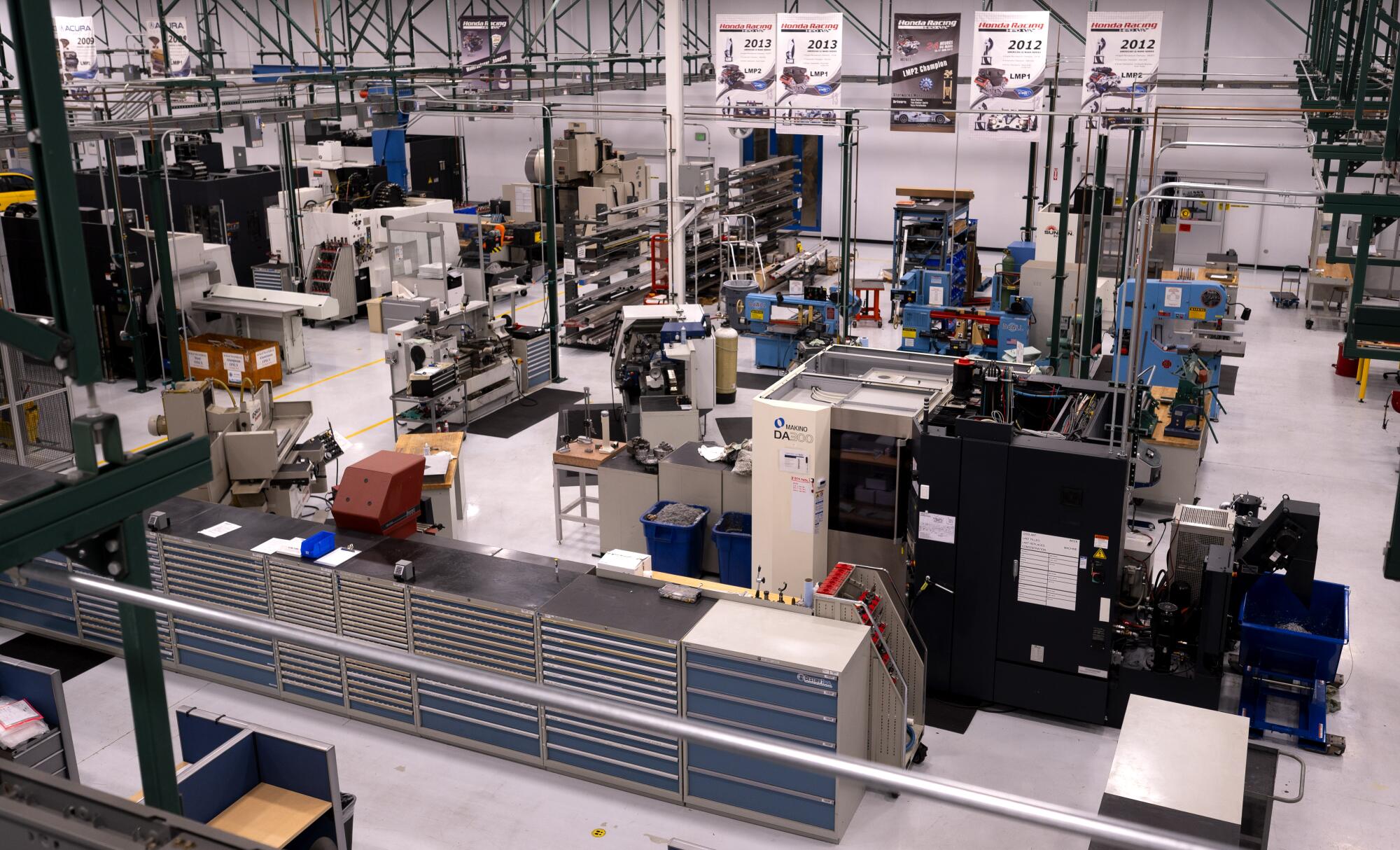
A view of the machine shop at the at the Honda Racing Corporation in Santa Clarita.
(Robert Hanashiro / For the Times)
Next year it will provide support for Honda’s effort to supply Formula One engines to Aston Martin.
Mostly the building is a maze of quiet office space where engineers sketch out their designs on computer screens, well-lit assembly bays where mechanics assemble the prototypes, and the noisy high-tech dyno rooms where those prototypes are tested. Every stage of a racing engine, from conception and construction to being shipped to the track, is managed at the facility.
“We develop the technology quickly,” said David Salters, the British-born engineer who heads HRC. “We try them. Sometimes they work, sometimes they don’t work and you try again. The point of having a racing facility inside your company is you can be agile. You can try stuff. You can train the people.
“The people are the most important thing of all this.”
The whole process is more NASA than NASCAR in that there’s not a speck of grease or oil on the bright, white vinyl flooring and everybody’s hands are clean.

David Salters, president of Honda Racing Corporation.
(Michael L. Levitt / LAT Images via American Honda Motor Co.)
“This is a world-class facility. It needs to be clinical and professional in the processes and systems we have here,” said Salters, who was head of engine development for the Ferrari F1 team and held a similar position at Mercedes-Benz before joining Honda a decade ago.
“It’s like an operating theater. We’re basically dealing with engines or electrical systems, which are like jewelry. They cannot tolerate dirt or anything like that. Everything has to be spotless and clean and well-organized. This is aerospace.”
And when the engines don’t work, they’re brought back to HRC and the engineering process is repeated in reverse in search of flaws. As for why they’re doing all that in a sleepy bedroom community better known for its paved bike paths and rustic hiking trails than for its motorsports history, that’s easy: Location, location, location.
Clarke originally expected to recruit engineers from Indianapolis and Charlotte, N.C., the heartland of American racing, while Honda insisted on keeping its operations near its corporate offices in Torrance. Clarke feared dropping people from the Midwest and South into L.A.’s traffic-clogged sprawl would be such a culture shock, he’d lose his best engineers.
So he chose Santa Clarita, which was isolated enough to not feel like L.A., but close enough to Torrance to be accessible. And the building came with an “Only in L.A.” feature: It shares a driveway with the studio where the popular TV series “NCIS” is filmed.
“Every so often a helicopter will land in the car park and we’re all told we can’t go outside in case we get swept away,” Salters said with a chuckle. “There was some ‘Star Trek’ thing where they decided our foyer could be useful. So for a few weeks we had a movie set in our foyer; we rented it out.
“You’ve got to look at business opportunities.”

Adi Susilo, chief engineer of powertrain at Honda Racing Corporation, looks over large monitors before the start of the 12 Hours of Sebring in March.
(Robert Hanashiro / For the Times)
It’s early on a chilly Saturday in March and HRC’s headquarters is mostly empty save for one corner on the building’s second floor where nearly a dozen people, some wearing headphones, have gathered behind computer screens facing six giant TV monitors.
A continent away, in central Florida, more than 50 cars are lined up for the 12 hours of Sebring. Each driver with a Honda engine has an engineer monitoring their car’s performance.
Before the pandemic, engineers would travel and work with race teams on site. But for the last four years the engineers have been working mostly at HRC, monitoring in-car telemetry that provides real-time information about everything from engine status and tire pressure to suspension behavior.
“Data is king,” said Adi Susilo, one of the HRC engineers. “Humans make mistakes. Data rarely does.”
F1 teams have monitored telemetry remotely for years, but it didn’t become common in IndyCar racing until 2023. Now it’s a vital part of every major racing series, including NASCAR.
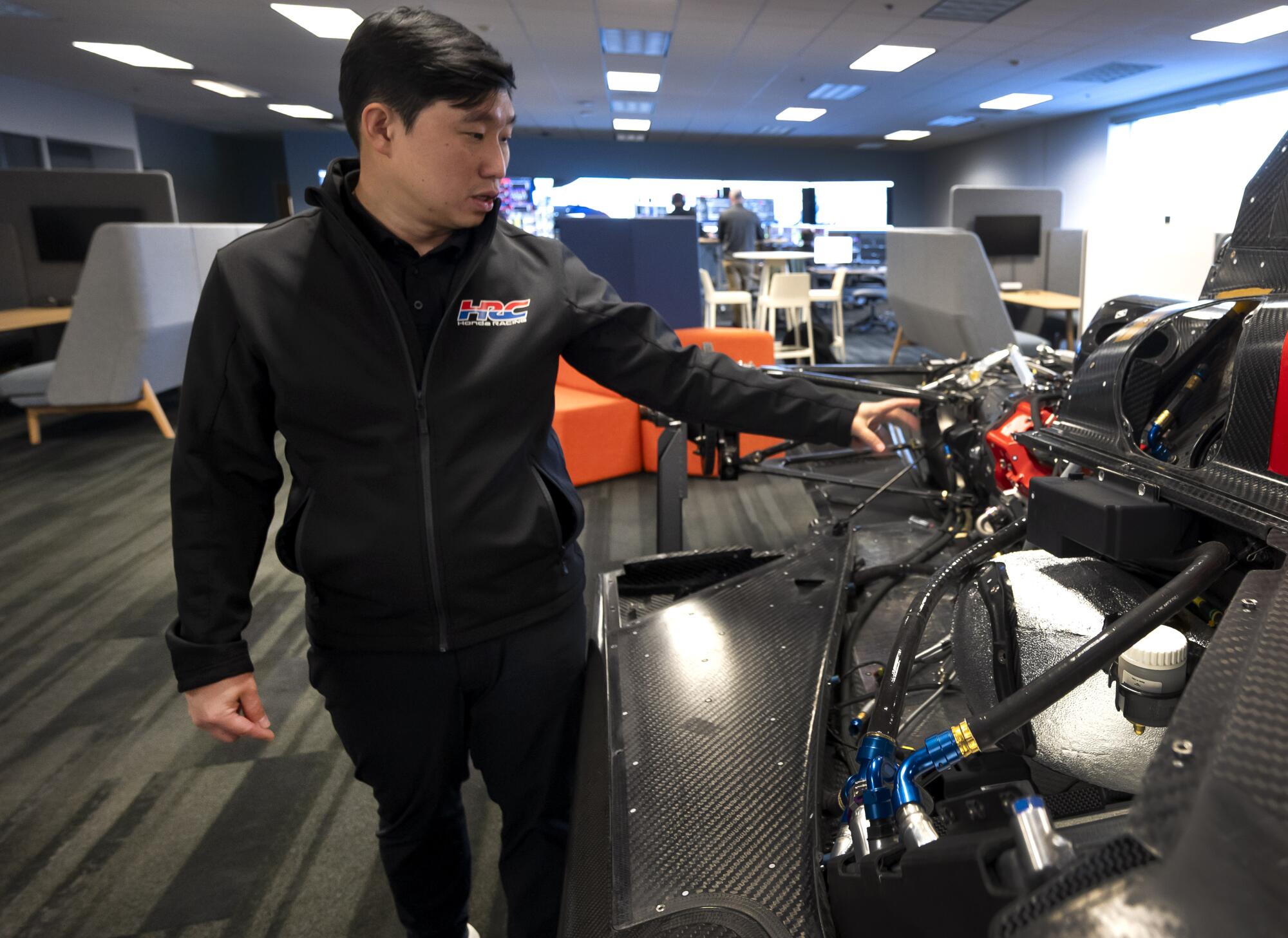
Powertrain chief engineer Adi Susilo looks at a full-size mock up of an IMSA prototype at Honda Racing Corporation.
(Robert Hanashiro / For the Times)
Engineers work out of what looks like a college classroom, only quieter. When the sound of a disembodied voice does cackle out of a headphone, it sounds like NASA Mission Control, the tone flat and unemotional, the conversation short and to the point.
“It’s better for solving problems,” said Susilo about working away from the track. “If there’s a problem, you just walk downstairs and talk to the guy who built the engine.”
That won’t be the case Sunday. For the Indy 500, Susilo said it’s all hands on deck, so most of Honda’s race-day engineers are in Indianapolis where the telemetry will be broadcast to their work stations in trailers at the track.
“A few of the IndyCar races are run that way,” he said, “but the 500 is almost always run that way just because everyone’s out here for the event. We’re also testing a new, hopefully more robust, telemetry streaming as it’s much harder to make sure we get 15 car’s worth of data.”
At first, the idea of having engineers looming electronically over the timing stand was a hard sell. Trusting someone with clean fingernails watching the race on monitors thousands of miles away wasn’t easy for some crew chiefs.
“What happens for people like me is that you have to erase the old-school way of thinking,” said Mike Hull, a former mechanic and driver who is now the managing director for Chip Ganassi Racing and chief strategist for driver Scott Dixon, a six-time IndyCar champion. “You’re electronically shoulder to shoulder with them.
“If you don’t listen to what somebody has to say, it stifles free thinking. Free thinking sends you down a path that you may not have originally been on, but makes you stronger at what you’re doing.”
1. Race engines being assembled at Honda Racing Corporation. 2. A technician in the HRC machine shop works on an engine. 3. Engineers monitor data during the 12 Hours of Sebring in March. 4. A engineer monitors telemetry remotely from HRC headquarters. (Robert Hanashiro / For the Times)
Dixon, the 2008 Indy 500 champion who will start Sunday’s race in the second row, agrees. Which is he why he’s made several trips to HRC to personally thank the engineers who design his engines and those who help direct his races.
“You always feel like there’s a big group behind you,” he said. “You just don’t get to see all them in one place but you know the machine is there, working pretty hard.”
One drawback, Dixon said, is you have to be careful what you say on the radio during races because you never know who’s listening.
“Twenty people at home, just on the team side, will be listening just on that one car,” he said. “So the communication is very wide open. You definitely have to watch your Ps and Qs.”
Two years later race teams have grown so comfortable with people looking over their shoulders, the engineers have become as much a part of the team as the cars. So when a nearby wildfire forced the evacuation of the building, Honda rented rooms at a nearby hotel, set up their TVs, computer monitors and a coffee machine in a conference room and worked from there.
“We’re pretty blind without it. The race teams are pretty competitive,” Susilo said. “They feel that instinct still does work. But it’s more data-driven.”

Honda powertain engineer Jake Marthaler monitors data during the 12 Hours of Sebring in March.
(Robert Hanashiro / For the Times)
Given the investment, the pressure can be intense.
“Every two weeks we want to have the latest development. We want to have made progress,” Salters said. “Every two weeks you have a deadline and the deadline does not move. It’s not like they’re going to say ‘OK, we’ll just delay the race a week.’ The flag drops, you’ve got to be ready.
“It’s sort of an engineering sport isn’t it? It’s like a true sport; the best team will win.”
If the IndyCar-Honda marriage has mostly been good for both sides, it has recently hit a rocky patch.
Honda’s supply contract with IndyCar ends next year and the company hasn’t hid its distaste over the cheating scandals that have recently tarnished the series. Last week Team Penske drivers Josef Newgarden, the two-time defending Indy 500 champion, and Will Power were forced to the back of the field for the start of Sunday’s race after illegally modified parts were found on their cars. Team Penske, which uses Chevrolet engines, was also caught cheating at the beginning of the 2024 season.
On Wednesday, the team fired three of its top racing executives. IndyCar, which is owned by Roger Penske (also the owner of Team Penske) said it is exploring the creation of an independent governing body absent of Penske employees.

Scott Dixon drives into the first turn during practice for the Indianapolis 500 on Friday.
(Michael Conroy / Associated Press)
That may not be enough to restore trust in the series. Honda, which supplies engines to 13 full-season IndyCar entries and three Indy 500-only cars, has declined to comment on the rules violations, but confirmed its continued participation in the series beyond 2026 may depend on Penske’s ability to separate himself from policing the series he owns and also competes in.
Honda said in a written statement Thursday that it has many concerns, among them “the relatively high overall cost to participate as an engine supplier” and “the potential (perceived or real) conflict of interest which may exist” with Penske’s ownership of the racing series, three of the cars competing in the series and his “significant stake” in Ilmor Engineering, which designs and manufactures engines for Chevrolet, Honda’s biggest competitor.
“Honda continues to have ongoing negotiations with IndyCar’s management and technical teams regarding our future as an engine supplier for the series,” said Chuck Chayefsky, manager of Honda & Acura Motorsports.
Whatever road Honda takes with IndyCar, it’s unlikely to change most of the day-to-day work at HRC, which is heavily involved with IMSA and will soon be working on F1 power-unit development.
So while the cars may change, the racing will never stop.
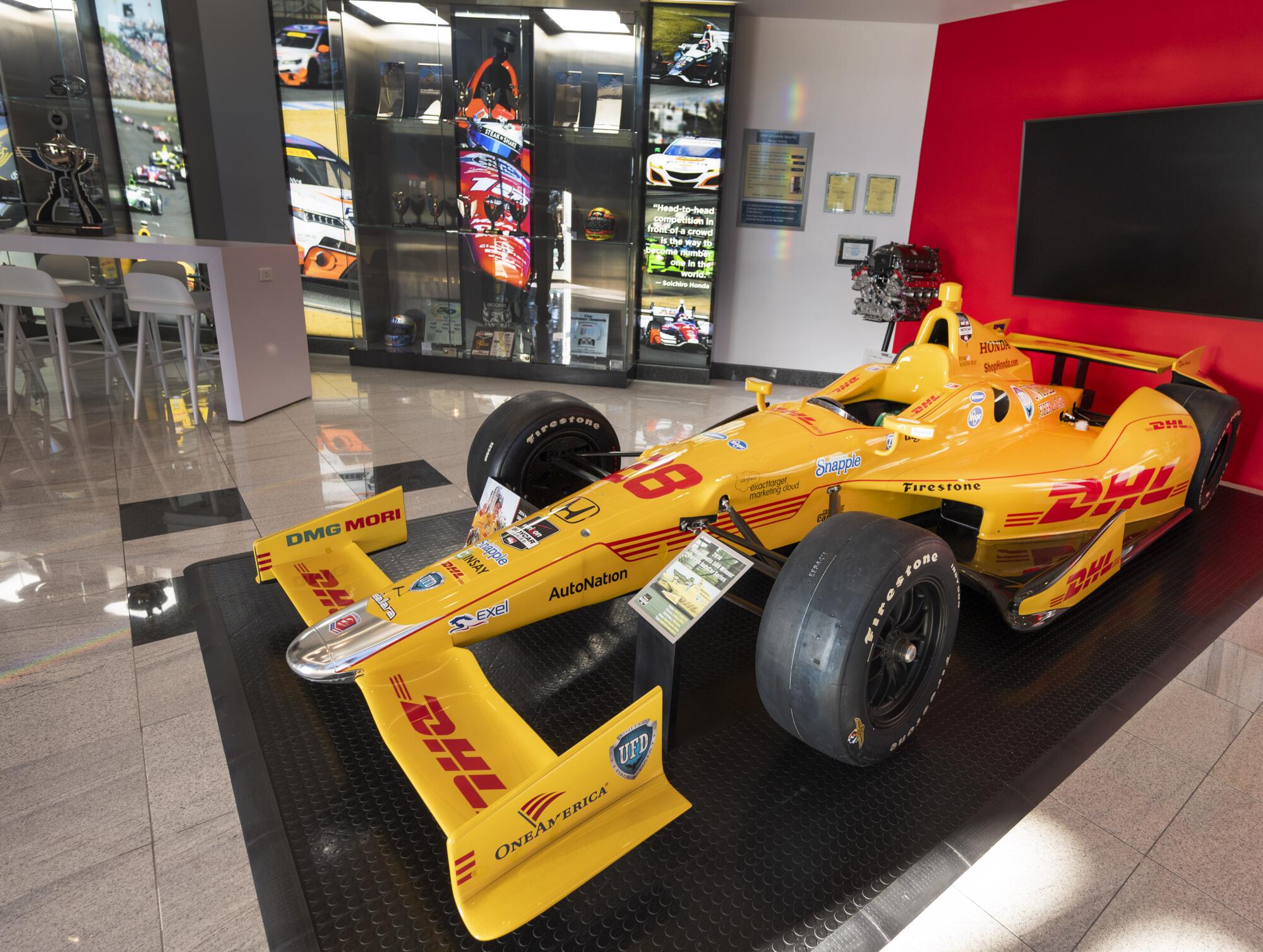
The car Ryan Hunter-Reay drove to victory for Andretti Autosport in the 2014 Indianapolis 500 sits on display at Honda Racing Corporation in Santa Clarita.
(Robert Hanashiro / For the Times)
“Thirty years ago our sole purpose in life was to look after racing in North America for Honda and Acura,” Salters said before last week’s events in Indianapolis. “Last year we changed that. We’re now part of a global racing organization. That’s another opportunity for associates here.”
“The automotive world, it’s pivoting,” he continued. “We are trying some new stuff. We’ll see how it goes.”
One chapter has been written. But the story isn’t finished.
Sports
Podcast host says Jordon Hudson 'choreographed' portion of Bill Belichick's recent interview

NEWYou can now listen to Fox News articles!
One of Bill Belichick’s stops among his book tour was on an episode of “The Pivot” podcast with Ryan Clark and Channing Crowder.
Belichick’s first interview promoting the book garnered tons of media attention, when Jordon Hudson was caught on camera butting into the conversation when Belichick was asked how they met.
Belichick has credited Hudson, 24, for being the business brainiac to his brand, but he has remained mum on getting any further than that in public interviews.
Jordon Hudson the girlfriend of Bill Belichick in attendance at Loudermilk Center for Excellence on Dec. 12, 2024. (Jim Dedmon-Imagn Images)
But that business side of Hudson was all in on Belichick’s “Pivot” interview, according to Crowder.
“He’s all in if you talk football, but if you start talking personal stuff, he starts doing the mumble and the one-word answers, and his old lady is different. She lurks,” Crowder said on his separate radio show. “It’s weird to know him as Coach Belichick running the entire organization as GM, head coach, talent coordinator, all that stuff, and then to see this tiny little 95-pound girl pretty much telling him what to do.”
Crowder added, but did not elaborate on, that Hudson “choreographed the open,” which included Belichick’s accomplishments as both a coach and author.
“She was there. She kind of coordinates and brand manages. She has her paws on the situation. It’s different . . . it was weird to be around Belichick and Jordon. I don’t see Belichick in that light. But he just smiles and nods,” Crowder continued.

Ryan Clark, Channing Crowder, and Jordon Hudson (Getty Images/IMAGN)
AIRBNB OWNERS SHARE SHOCK OF FINDING SHIRTLESS BILL BELICHICK ON THEIR DOORBELL CAMERA: ‘CREEPY OLD GUY’
Hudson was not at Belichick’s interview with “Good Morning America” last week.
According to reports, Hudson interrupted the CBS interview several times and even stormed off at one point, delaying the interview by around 30 minutes.
Belichick released a statement saying he was “surprised” about getting the questions about his relationship and that when Hudson had stepped in, she had been doing her job. He went on to accuse CBS of creating a “false narrative” with so-called “selectively edited clips.”
CBS responded, disagreeing with Belichick’s version of events.
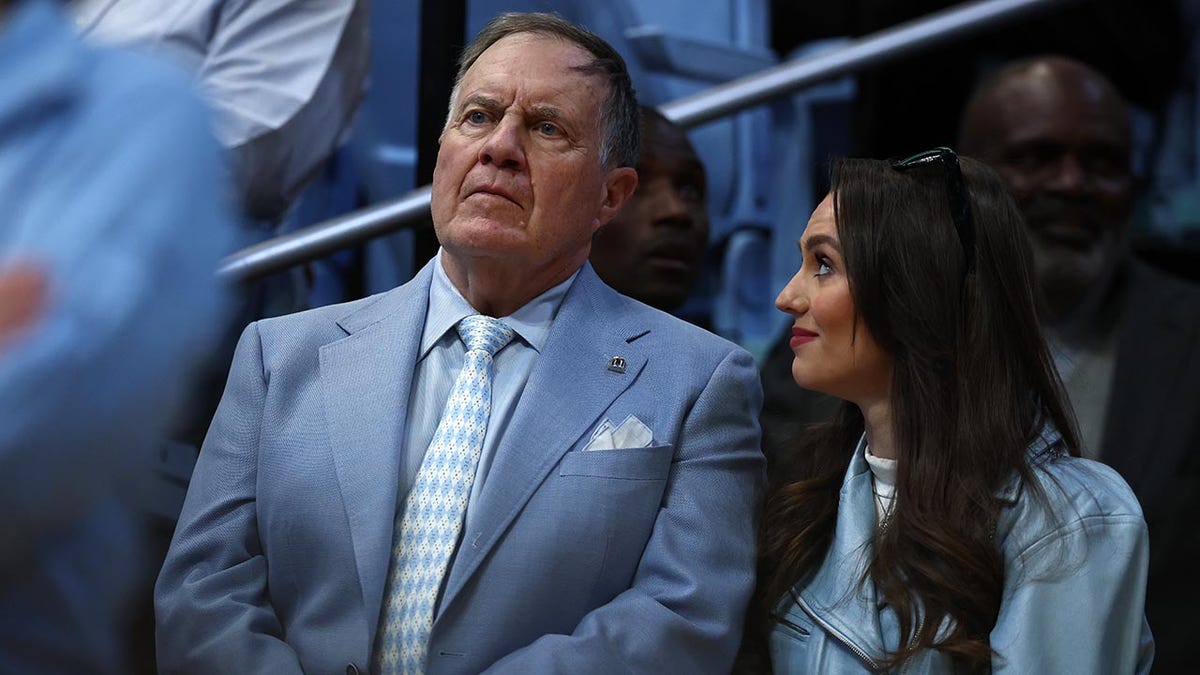
North Carolina Tar Heels football head coach Bill Belichick and his girlfriend Jordon Hudson look on during the first half of the game between the North Carolina Tar Heels and the Duke Blue Devils at Dean E. Smith Center on March 8, 2025, in Chapel Hill, North Carolina. (Jared C. Tilton/Getty Images)
In the interview with The Pivot, Belichick cleared the air on Hudson’s reported involvement with “Hard Knocks,” ultimately saying that the show was not a match with UNC. He also reiterated that Hudson is not involved with UNC football, a statement that the school itself made following reports that Hudson was barred from the facility.
Follow Fox News Digital’s sports coverage on X, and subscribe to the Fox News Sports Huddle newsletter.
-

 Technology1 week ago
Technology1 week agoMeta asks judge to throw out antitrust case mid-trial
-

 World1 week ago
World1 week agoCommissioner Hansen presents plan to cut farming bureaucracy in EU
-

 News1 week ago
News1 week agoNew Orleans jailbreak: 10 inmates dug a hole, wrote ‘to easy’ before fleeing; escape plan found
-

 News1 week ago
News1 week agoVideo: Doctors Heal Infant Using First Customized-Gene Editing Treatment
-

 Movie Reviews1 week ago
Movie Reviews1 week agoDevil’s Double Next Level Movie Review: Trapped in a punchline purgatory
-

 Business1 week ago
Business1 week agoVideo: How Staffing Shortages Have Plagued Newark Airport
-

 Business1 week ago
Business1 week agoConsumers Show Signs of Strain Amid Trump's Tariff Rollout
-

 Movie Reviews1 week ago
Movie Reviews1 week ago‘Nouvelle Vague’ Review: Richard Linklater’s Movie About the Making of Godard’s ‘Breathless’ Is an Enchanting Ode to the Rapture of Cinema





